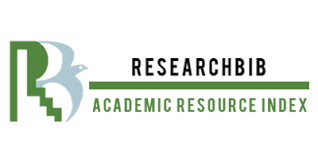Menu
Publications
2025
2024
2023
2022
2021
2020
2019
2018
2017
2016
2015
2014
2013
2012
2011
2010
2009
2008
2007
2006
2005
2004
2003
2002
2001
Editor-in-Chief

Nikiforov
Vladimir O.
D.Sc., Prof.
Partners
doi: 10.17586/2226-1494-2025-25-1-87-94
DAS signal modeling using the generative adversarial neural network technique
Read the full article
Article in Russian
For citation:
Abstract
For citation:
Timofeev A.V. DAS signal modeling using the generative adversarial neural network technique. Scientific and Technical Journal of Information Technologies, Mechanics and Optics, 2025, vol. 25, no. 1, pp. 87–94 (in Russian). doi: 10.17586/2226-1494-2025-25-1-87-94
Abstract
A new method of generating model sets of Distributed Acoustic Sensing (DAS) signals of different classes is proposed. Statistical characteristics of model signals are quite similar to real DAS-signals of corresponding classes and can be used for sharp improvement of DAS-signals processing quality by machine learning methods. The proposed method is a modification of the Generative Adversarial Network (GAN) technique. The novelty of the approach lies in the introduction of an additional external control loop for the performance of the generative network which includes a classifier trained on an available (small) corpus of real DAS signals. A method for generating model sets of DAS signals based on GAN technology is proposed, and it differs from the classical technology by the presence of an additional external quality control loop. An optimality criterion for the generating system is formulated, the optimum of which is achieved by step-by-step reconfiguration of the GAN neural network structure. Reconfiguration is based on the Nelder- Mead optimization method. A software implementation of the proposed solution architecture on the Python platform is developed and tested on real data. Results are presented proving the practical efficiency of the proposed method. In particular, the proposed method allowed to increase the capacity of the training dataset and, thus, to increase the resulting reliability of the classification of target DAS signals. The developed approach is promising for use in cases where the capacity of the datasets provided for training is insufficient to ensure highly reliable classification.
Keywords: GAN, machine learning, classification, fiber optic monitoring system, DAS, generative model
References
References
- Timofeev A.V., Groznov D.I. Classification of Seismoacoustic Emission Sources in Fiber Optic Systems for Monitoring Extended Objects. Optoelectronics, Instrumentation and Data Processing, 2020, vol. 56, no. 1, pp. 50–60. https://doi.org/10.3103/S8756699020010070
- Choi K.N., Juarez J.C., Taylor H.F. Distributed fiber optic pressure/seismic sensor for low-cost monitoring of long perimeters. Proceedings of SPIE, 2003, vol. 5090, pp. 134–141. https://doi.org/10.1117/12.484911
- Zuo J., Zhang Y., Xu H., Zhu X., Zhao Z., Wei X., Wang X. Pipeline Leak Detection Technology Based on Distributed Optical Fiber Acoustic Sensing System. IEEE Access, 2020, vol. 8, pp. 30789–30796. https://doi.org/10.1109/access.2020.2973229
- Timofeev A.V., Maksimov P.N., Groznov D.I., Application of fiber optic technology for monitoring the mine water drainage pipeline system in the permafrost zone. Gidrotehnika, 2023, no. 3 (72), pp. 34–43. (in Russian). https://doi.org/10.55326/22278400_2023_3_34
- Goodfellow I., Pouget-Abadie J., Mirza M., Xu B., Warde-Farley D., Ozair S., Courville A., Bengio Y. Generative Adversarial Nets. Proc. of the 28th International Conference on Neural Information Processing Systems, 2014, vol. 2, pp. 2672–2680.
- Goodfellow, I., Pouget-Abadie, J., Mirza, M., Xu, B., Warde-Farley, D., Ozair, S., Courville, A., Bengio, Y. Generative adversarial networks. arXiv, 2014, arXiv:1406.2661. https://doi.org/10.48550/arXiv.1406.2661
- Goodfellow Ian. NIPS 2016 Tutorial: Generative Adversarial Networks. arXiv, 2017, arXiv:1701.00160. https://doi.org/10.48550/arXiv.1701.00160
- Goodfellow I., Bengio Y., Courville A. Back-Propagation and Other Differentiation Algorithms. Deep Learning, MIT Press, 2016, pp. 200–220.
- Duchi J., Hazan E., Singer Y. Adaptive subgradient methods for online learning and stochastic optimization. Journal of Machine Learning Research, 2011, vol. 12. pp. 2121–2159.
- Jones K.S. A Statistical interpretation of term specificity and its application in retrieval. Journal of Documentation, 1972, vol. 28, no. 1, pp. 11–21. https://doi.org/10.1108/eb026526
- Rüschendorf L. Wasserstein metric. Encyclopedia of Mathematics, ed. by M. Hazewinkel, Springer, 2000, pp. 487-488.
- Erdmann M., Glombitza J., Quast T. Precise simulation of electromagnetic calorimeter showers using a Wasserstein Generative Adversarial Network. Computing and Software for Big Science, 2019, vol. 3, no. 1, pp. 4. https://doi.org/10.1007/s41781-018-0019-7
- Goodfellow I., Pouget-Abadie J., Mirza M., Xu B., Warde-Farley D., Ozair S., Courville A.C., Bengio Y. Generative adversarial nets. Advances in Neural Information Processing Systems 27: Annual Conference on Neural Information Processing Systems (NIPS), 2014, pp. 2672–2680
- Farnia F., Ozdaglar A. Do GANs always have Nash equilibria? Proc. of the 37th International Conference on Machine Learning, PMLR, 2020, vol. 119, pp. 3029–3039.
- Timofeev A.V. Method for hyperparameter tuning in machine learning tasks for stochastic objects classification. Scientific and Technical Journal of Information Technologies, Mechanics and Optics, 2020, vol. 20, no. 5, pp. 667–676. (in Russian). https://doi.org/10.17586/2226-1494-2020-20-5-667-676
























